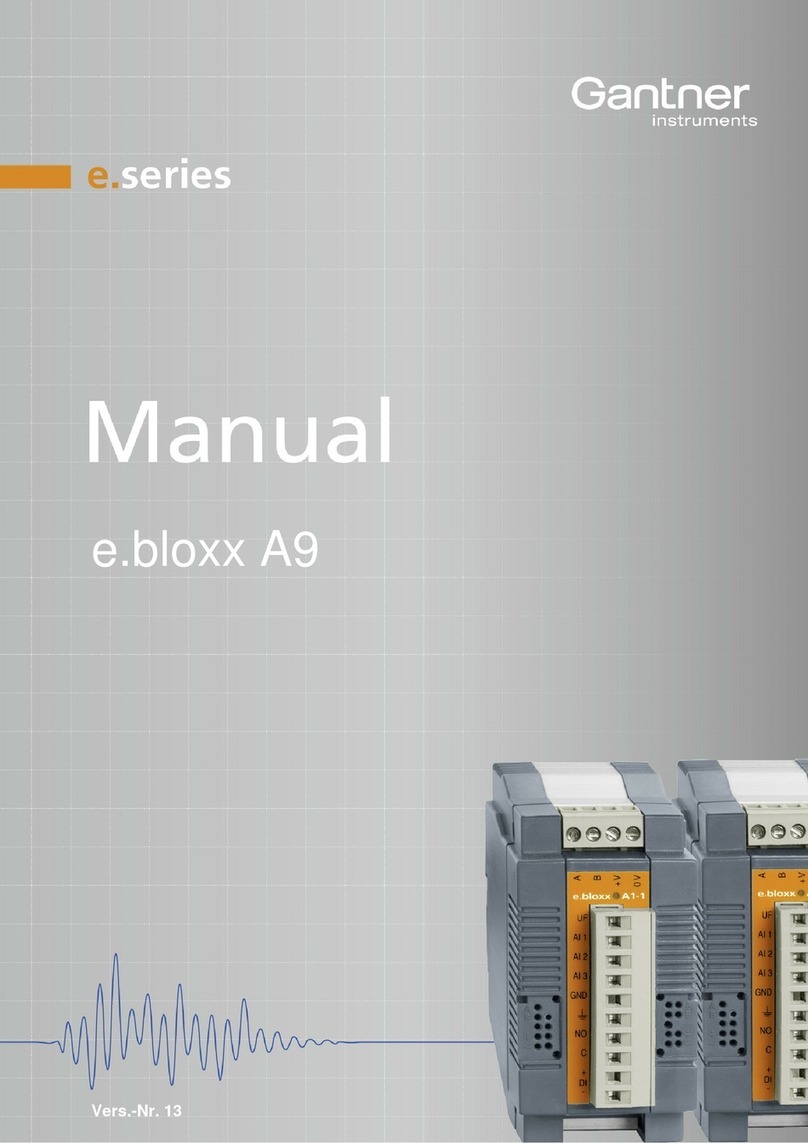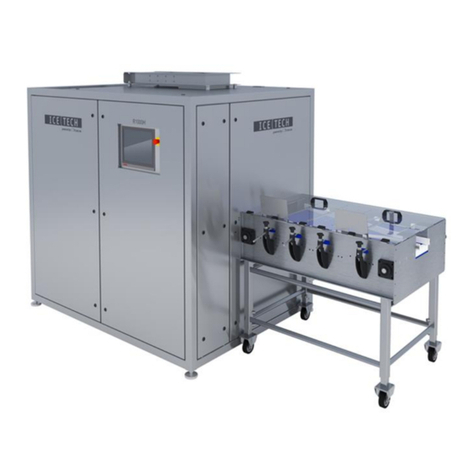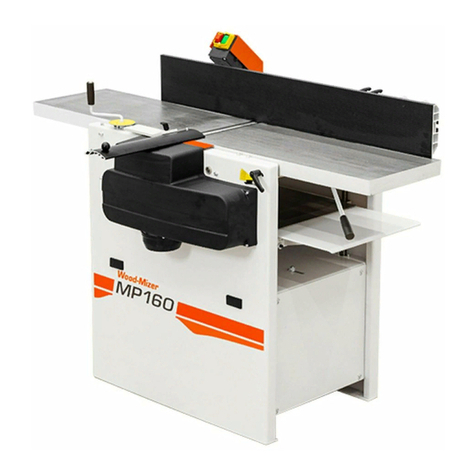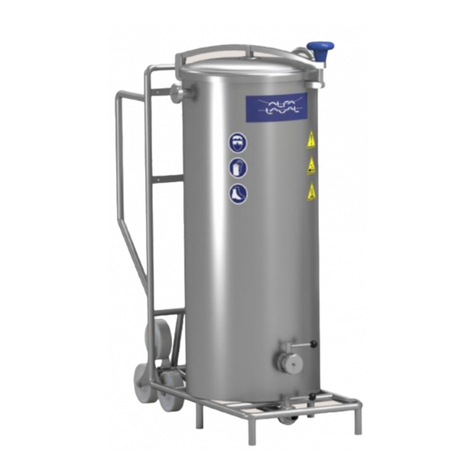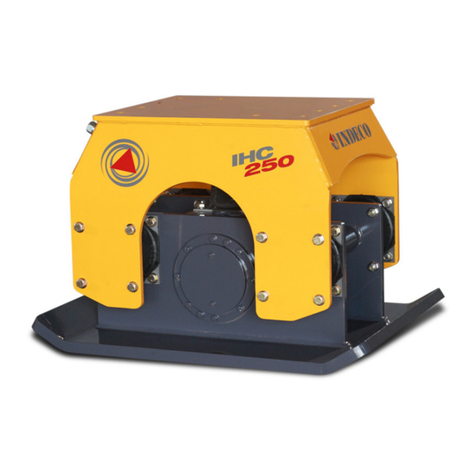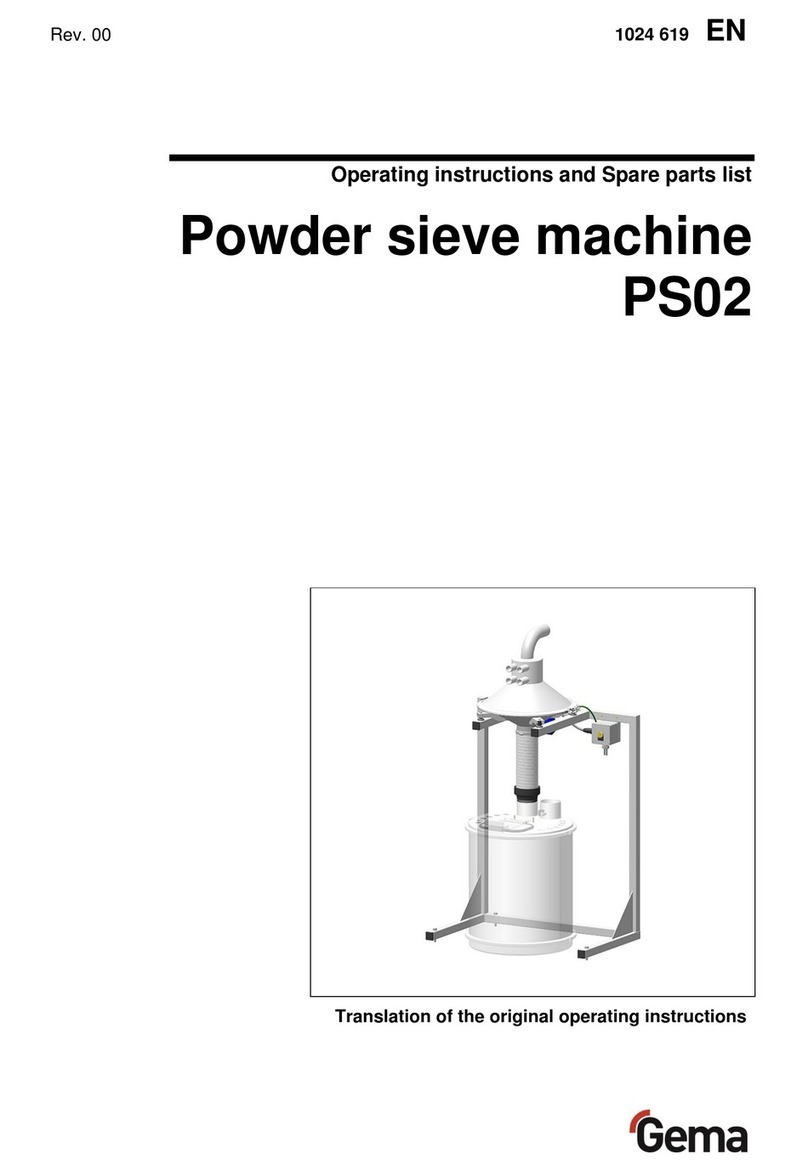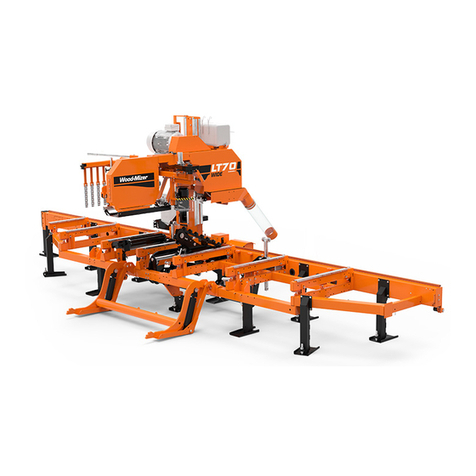Gantner e.bloxx A5CR User manual

e.bloxx A5CR
Vers.-Nr. 11


e.bloxx A5-1CR
HB_EBLOXX-A5CR_E_V11.doc
1
Gantner Instruments Test & Measurement GMBH
Copyright 2005 by GANTNER INSTRUMENTS Test & Measurement GMBH, Schruns (Austria).
Copyrights:
Operating instructions, manuals and software are protected by copyright ©. All rights are reserved.
Copying, duplication, translation, installation in any electronic medium or machine-readable form in whole or in part is
prohibited. The sole exception is represented by creation of a back-up copy of software for own use as a safeguard, so
far as this is technically possible and recommended by us. Any infringement will render the party committing such
infringement liable to compensation payment.
Liability:
Any claims against the manufacturer based on the hardware or software products described in this manual
shall depend exclusively on the conditions of the guarantee. Any further-reaching claims are excluded, and in particular
the manufacturer accepts no liability for the completeness or accuracy of the contents of this manual. The right is
reserved to make alterations, and alterations may be made at any time without prior notice being given.
Trade marks:
Attention is drawn at this point to markings and registered trade marks used in this manual, in particular
to those of Microsoft Corporation, International Business Machines Corporation and Intel Corporation.
Important:
Before commencing installation, commissioning, putting into service and before any
maintenance work is carried out, it is essential that the relevant warning and safety instructions in this
manual are read!
!

e.bloxx A5-1CR
2
HB_EBLOXX-A5CR_E_V11.doc
Gantner Instruments Test & Measurement GMBH

e.bloxx A5-1CR
HB_EBLOXX-A5CR_E_V11.doc
3
Gantner Instruments Test & Measurement GMBH
General warning and safety instructions:
Dear customer,
We congratulate you on having selected a product of Gantner Instruments Test & Measurement GMBH. So that our
product functions in your installation with safety and to your complete satisfaction, we take this opportunity to familiarize
you with the following ground rules:
1. Installation, commissioning, operation and maintenance of the product purchased must be carried out in accordance
with instructions, i.e. in accordance with the technical conditions of operation, as described in the corresponding
product documentation.
2. Before installation, commissioning, operation or maintenance it is therefore essential that you read the
corresponding chapter of this manual and observe its instructions.
3. If there are still some points on which you are not entirely clear, please do not take a chance, but ask the customer
adviser responsible for you, or ring the Gantner Instruments Test & Measurement GMBH hot line.
4. Where not otherwise specifically laid down, appropriate installation, commissioning, operation and maintenance of
the appliance is the customer’s responsibility.
5. Directly on receipt of the goods, inspect both the packaging and the appliance itself for any signs of damage. Also
check that the delivery is complete (-> accessories, documentation, auxiliary devices, etc.).
6. If the packaging has been damaged in transport or should you suspect that it has been damaged or that it may have
a fault, the appliance must not be put into service. In this case, contact your customer advisor. He will make every
effort to resolve the problem as quickly as possible.
7. Installation, commissioning and servicing of our appliances must only be carried out by suitably trained personnel. In
particular, correspondingly qualified specialists may only make electrical connections. Here, the appropriate
installation provisions in accordance with the relative national Electrical Engineers construction regulations (e.g.
ÖVE, [Austrian] VDE, [German]...) must be observed.
8. Where not otherwise stated, installation and maintenance work on our appliances is exclusively to be carried out
when disconnected from the power supply. This applies in particular to appliances, which are normally supplied by
low-tension current.
9. It is prohibited to make alterations to the appliances or to remove protective shields and covers.
10. Do not attempt yourself to repair an appliance after a defect, failure or damage, or to put it back into operation again.
In such cases, it is essential you contact either your customer adviser or the Gantner Instruments Test &
Measurement GMBH hot line. We will make every effort to resolve the problem as quickly as possible.
11. Gantner Instruments Test & Measurement GMBH accepts no responsibility for any injuries or damage caused as a
result of improper use.
!

e.bloxx A5-1CR
4
HB_EBLOXX-A5CR_E_V11.doc
Gantner Instruments Test & Measurement GMBH
12. Although every care is taken and we are continuously aiming for improvement, we cannot exclude completely the
possibility of errors appearing in our documentation. Gantner Instruments Test & Measurement GMBH therefore
accepts no responsibility for the completeness or the accuracy of this manual. The right is reserved to make
alterations, and we may carry out alterations at any time without giving prior notice.
13. Should you discover any fault with the product or in its accompanying documentation, or have any suggestions for
improvement, you may confidently approach either your customer adviser or Gantner Instruments Test &
Measurement GMBH directly.
14. However, even if you just want to tell us that everything has functioned perfectly, we still look forward to hearing from you.
We wish you a successful application of our appliances. We will be pleased to welcome you as a customer again soon.
Contact address / manufacturer:
Gantner Instruments Test & Measurement GmbH
Montafonerstrasse 8
A - 6780 Schruns/Austria
Tel.: +43 5556 73784 - 410
Fax: +43 5556 73784 - 419
Web: www.gantner-instruments.com
Gantner Instruments Test & Measurement GmbH
Industriestraße 12
D-64297 Darmstadt
Tel.: +49 6151 95136 - 0
Fax: +49 6151 95136 - 26
Web: www.gantner-instruments.com

e.bloxx A5-1CR
TABLE OF CONTENTS
HB_EBLOXX-A5CR_E_V11.doc
5
Gantner Instruments Test & Measurement GMBH
TABLE OF CONTENTS
1.
ABOUT THIS MANUAL......................................................................................................................................................6
2.
MODULE DESCRIPTION ...................................................................................................................................................7
2.1.
System Overview ................................................................................................................................................................7
2.2.
Types of Modules................................................................................................................................................................8
2.3.
Module Parts .......................................................................................................................................................................9
2.4.
Functional Overview..........................................................................................................................................................10
2.5.
Front-LED..........................................................................................................................................................................10
2.6.
DC-Isolation.......................................................................................................................................................................10
2.7.
Functional Diagram ...........................................................................................................................................................11
3.
MOUNTING E.BLOXX AND CONNECTING WIRES .......................................................................................................12
3.1.
Environmental Conditions .................................................................................................................................................12
3.2.
Connection Technique ......................................................................................................................................................12
3.3.
Power Supply ....................................................................................................................................................................12
3.4.
Bus Connection.................................................................................................................................................................13
3.5.
Shielding............................................................................................................................................................................18
3.6.
Rapid Bus Link Plug..........................................................................................................................................................18
4.
MEASUREMENTS............................................................................................................................................................20
4.1.
General..............................................................................................................................................................................20
4.2.
Analog Input - Measurement of Pt100/Pt1000..................................................................................................................21
4.3.
Digital Output - Status .......................................................................................................................................................22
4.4.
Digital Input - Status Recording ........................................................................................................................................23
5.
CONFIGURATION ............................................................................................................................................................24
5.1.
General Information about Configuration Software ICP 100.............................................................................................24
5.2.
Setting Address and Baud Rate of an e.bloxx ..................................................................................................................24
5.3.
e.bloxx Settings.................................................................................................................................................................25
5.4.
Definition of Channels .......................................................................................................................................................26
6.
SPECIFICATIONS ............................................................................................................................................................27
6.1.
Analog Inputs ....................................................................................................................................................................27
6.2.
Analog/Digital Conversion.................................................................................................................................................27
6.3.
Digital In- and Output ........................................................................................................................................................27
6.4.
Communication Interface ..................................................................................................................................................28
6.5.
Power Supply ....................................................................................................................................................................28
6.6.
Mechanical ........................................................................................................................................................................28
6.7.
Connection ........................................................................................................................................................................28
6.8.
Environmental Conditions .................................................................................................................................................28
7.
DECLERATION OF CONFORMITY .................................................................................................................................29

e.bloxx A5-1CR
ABOUT THIS MANUAL
6
HB_EBLOXX-A5CR_E_V11.doc
Gantner Instruments Test & Measurement GMBH
1. ABOUT THIS MANUAL
This manual describes the installation and setup of the e.bloxx A5-1CR module.
The following information can be found in this manual:
- Description of the e.bloxx system with detailed information on the hardware and module features.
- Installation description of the module and how it is connected to the power supply and bus lines.
- Description of the different types of measurement.
- A short introduction on how the e.bloxx modules are configured with the CONFIGURATION SOFTWARE ICP 100.
This software has an integrated help including a detailed description of the configuration process.
- Possible errors and its solutions.
- Technical specifications of the modules.

e.bloxx A5-1CR
MODULE DESCRIPTION
HB_EBLOXX-A5CR_E_V11.doc
7
Gantner Instruments Test & Measurement GMBH
2. MODULE DESCRIPTION
2.1. System Overview
The e.bloxx modules have been developed for the industrial and experimental testing technology, especially for the
multi-channel measurement of electrical signals of thermal or mechanical data at test beds and test sites.
Picture 2.1
- e.bloxx A5-1CR
The e.bloxx A5-1CR, which is described in this manual, is a 2-channel module for temperature measurements with
special Cryo sensors in 4 wire technique. Additional channels are available for calculations, alarms, setpoints and digital
signals. They are part of a whole product line of different e.bloxx.
Due to the fast and precise signal conditioning the e.bloxx modules produce reliable and exact measurement data.
Standardized interfaces guarantee the integration of up to 127 modules into a single network.
With the e.gate module very high data rates via Profibus-DP and Ethernet can be realized. The customer-specific signal
processing supplements the standard conditioning of the single e.bloxx modules.

e.bloxx A5-1CR
MODULE DESCRIPTION
8
HB_EBLOXX-A5CR_E_V11.doc
Gantner Instruments Test & Measurement GMBH
2.2. Types of Modules
There are several types of e.bloxx, which differ in their number and typeof analog and digital inputs and outputs.
D2-1
2
8
-
-
4
-
-
-
-
-
-
-
-
-
-
-
-
-
-
-
-
-
-
-
D1-4
6
32
-
-
-
32
32
-
-
-
-
-
-
-
-
-
-
-
-
-
-
x
x
x
D1-1
1,5
8
-
-
-
8
8
-
-
-
-
-
-
-
-
-
-
-
-
-
-
x
x
x
A9-1
2,3
8
-
4
-
1
1
-
-
-
-
-
-
-
-
-
-
-
-
-
-
x
-
-
A6-2
5
16
1
2
-
6
4
-
-
-
-
-
-
x
x
x
x
x
x
x
x
x
x
x
A6-3
6
24
3
3
-
3
3
-
-
-
-
-
-
x
x
x
x
x
x
-
-
x
-
-
A6-1
2
8
1
1
-
1
1
-
-
-
-
-
-
x
x
x
x
x
x
-
-
x
-
-
A5-1
CR
1,5
8
2
-
-
1
1
-
-
-
-
x
-
-
-
-
-
-
-
-
-
x
-
-
A5-1
1,5
8
2/3/6
-
-
1
1
-
-
-
x
-
-
-
-
-
-
-
-
-
x
-
-
A4-4
6
32
16
-
-
-
-
x
-
-
-
-
x
-
-
-
-
-
-
-
-
-
-
-
A4-1
1,5
8
4
-
-
-
-
x
-
-
-
-
x
-
-
-
-
-
-
-
-
-
-
-
A3-4
6
32
16
-
-
4
4
x
-
-
-
-
-
-
-
-
-
-
-
-
-
x
-
-
A3-1
1,5
8
4
-
-
1
1
x
-
-
-
-
-
-
-
-
-
-
-
-
-
x
-
-
A1-8
12
64
8
-
8
8
-
x
x
x
x
-
x
x
-
-
-
-
-
x
-
x
-
-
A1-4
6
32
4
-
4
4
-
x
x
x
x
-
x
x
-
-
-
-
-
x
-
x
-
-
A1-1
1,5
8
1
-
1
1
-
x
x
x
x
-
x
x
-
-
-
-
-
x
-
x
-
-
Voltage Supply
Power Consumption [W]
Variable / Channels
Analog Inputs
Analog Outputs
Relay Outputs
Digital Inputs
Digital Outputs
Fieldbus Interface
Protocols
Quantity to measure
Sensor Principle
Voltage
Current
Resistance
Pt100 / Pt1000
Cryo Sensor
Thermocouple
Strain Gauge Full Bridge
Strain Gauge Half Bridge
Strain Gauge Quarter Br.
Inductive Full Brigde
Inductive Half Bridge
LVDT
Potentiom. Transducer
Piezoresist. Transducer
Status
Frequency
Counter
10 - 30 VDC
RS 485
ASCII - Modbus-RTU - Profibus-DP - LocalBus
Table 2.1.
- Characteristics of the e.bloxx modules

e.bloxx A5-1CR
MODULE DESCRIPTION
HB_EBLOXX-A5CR_E_V11.doc
9
Gantner Instruments Test & Measurement GMBH
2.3. Module Parts
1 … Pluggable Screw-Type Terminal Strip for Connection of RS-485 Bus and Power Supply
2 … Power/Error-LED (red/green)
3 … Pluggable Screw-Type Terminal Strip for Sensor Connection
4 … Rapid Bus Link Plugs
Picture 2.2.
- Parts of the e-bloxx A5-1CR
Terminal Strip for RS 485 and Power Supply
Table 2.2.
- Description of Terminal Strip for RS 485 Bus and Power Supply
Terminal Strip for Sensor Connection
Table 2.3.
- Description of Terminal Strip for Sensor Connection
Terminal
Description
A RS 485 Bus Interface A
B RS 485 Bus Interface B
+V Power Supply +
0V Power Supply -
Terminal Description
DI Digital Input
DO Digital Output
AI 1 Sensor 1 +Input
AI 2 Sensor 1 +Sense Lead
AI 3 Sensor 1 -Sense Lead
GND Sensor 1 -Input (Ground)
AI 4 Sensor 2 +Input
AI 5 Sensor 2 +Sense Lead
AI 6 Sensor 2 -Sense lead
GND Sensor 2 -Input (Ground)

e.bloxx A5-1CR
MODULE DESCRIPTION
10
HB_EBLOXX-A5CR_E_V11.doc
Gantner Instruments Test & Measurement GMBH
2.4. Functional Overview
This manual describes the e.bloxx module A5-1CR. This module is an 8-channel module (real plus virtual).
Each e.bloxx module has 8 channels that can be defined, the other channels can be used to do arithmetical calculations
or process the measured value (scaling, min/max, alarm), to preset a certain value that can be changed later via
interface and for threshold monitoring. The channels are defined in the configuration table of the Configuration Software
ICP 100.
2.5. Front-LED
The LED at the front of the e.bloxx modules provides the following information:
LED green Module works well, no signal overflow, no communication error…
LED red general error like signal overflow, broken sense leads
LED red + short off period general error like signal overflow, broken sense leads + communication timeout
LED green + short red flash Signal ok + communication timeout
LED red fast flashing global error, no suitable firmware
Notice:
The LED will get red when the signal leaves the selected range and the error checking is activated
(see ICP 100 column Range/Error).
2.6. DC-Isolation
The power supply, bus interface, analog inputs are DC-isolated from each other.

e.bloxx A5-1CR
MODULE DESCRIPTION
HB_EBLOXX-A5CR_E_V11.doc
11
Gantner Instruments Test & Measurement GMBH
2.7. Functional Diagram
The following picture can describe the e.bloxx A5-1CR.
0V
AI 1
AI 4
PGA
Ref
Analog
Digital
DC-DC
µP
(Main Proc.)
Analog
Multiplexer
FLASH
Memory
Opto
+V
AI 2
AI 5
A
AI 3
AI 6
B
GND
GND
DI
DO
19 Bit
ADC
LED
JTAG
RS 485
R-Ref
Opto
+V
0V
Picture 2.3.
- Functional Diagram of the e.bloxx A5-1CR

e.bloxx A5-1CR
MOUNTING e.bloxx AND CONNECTING WIRES
12
HB_EBLOXX-A5CR_E_V11.doc
Gantner Instruments Test & Measurement GMBH
3. MOUNTING e.bloxx AND CONNECTING WIRES
3.1. Environmental Conditions
The e.bloxx modules are protected against water and dirt according IP 20. If required by the conditions of the operating
site the modules have to be installed accordingly, e.g. in a water-resistant or water-proof case, compliant with the
regulations of electrical engineering.
For the allowed ambient temperatures for the e.bloxx A5-1CR see the Technical Specifications at the end of this
manual.
3.2. Connection Technique
The wires are connected to the modules via screw-type terminals. The captive terminal screws are part of the terminal
strips. All terminal strips are of plug-in type and can be detached from the modules.
Not more than 2 leads should be connected with one clamp. In this case both leads should have the same conductor
cross-section. For the precise clamping of stranded wire we recommend the use of wire-end ferrules.
Notice:
Connecting wires respectively the plugging-in and -out of the terminal strip is only allowed with modules in
power-off status.
In order to prevent interference with sensors, signals and modules, shielded cables have to be used for the
power supply, bus connection and signal lines.
We strongly recommend using a single screened cable each input signal. To use more signals in one cable
could generate interacting influences.
Notice:
For optimal performance the e.bloxx modules must be grounded properly. This is achieved by utilizing the
Ground/Earth screw on the back of each e.bloxx module. The screen of the sensor cable has to be grounded
at the same potential.
3.3. Power Supply
Non-regulated DC voltage between +10 and +30 VDC is sufficient for the power supply of the modules. The input is
protected against excess voltage and polarity connecting error. The power consumption remains approximately constant
over the total voltage range, due to the integrated switching regulator.
Due to their low current consumption the modules can also be remotely supplied via longer lines. Several modules can
be supplied in parallel within the permissible voltage range and drop in the lines. If required, the supply lines together
with the bus line may be incorporated in one cable.
In order not to overload the module power supply needlessly and to avoid unnecessary line troubles, a separate power
supply is recommended for sensors with a large current drain.
The distribution voltage for the e.bloxx modules has to be protected by a fuse with maximum 1 A (inert). The modules
have an internal fuse (reversible) for protection against excess voltage, excess current and wrong polarity.

e.bloxx A5-1CR
MOUNTING e.bloxx AND CONNECTING WIRES
HB_EBLOXX-A5CR_E_V11.doc
13
Gantner Instruments Test & Measurement GMBH
Notice:
It depends on the power supply unit and its noise and internal grounding issues whether it is helpful to
connect earth of the power supply unit with ground/earth of the e.bloxx module.
Picture 3.1.
- Power Supply of the e.bloxx Modules
3.4. Bus Connection
Only the connection of the e.bloxx modules to the bus is described in here. A detailed description of the bus and the
communication of the modules can be found in the Communication Guide of the e.bloxx/e.gate modules.
The e.bloxx modules have an RS 485 bus interface for connection to the serial fieldbus. The bus has to be terminated
on both sides with a characteristic impedance. The maximum line length depends on the transmission speed (refer to
the Communication Guide for details) and can never be higher than 1.2 km per bus segment or 4.8 km via a physical
bus string by using 3 repeaters. A maximum of 32 devices are possible with each bus segment and up to 127 devices
via a physical bus string.
Wiring
In general, the e.bloxx is connected to the bus by connecting both signal leads A and B of the incoming bus cable and
A' and B' of the outgoing bus cable together to one terminal on the module (Picture 3.2). Alternatively, the bus can also
be connected by a "stub cable" (Picture 3.3). This guarantees that the bus connection to other modules remains in
place, even if one module has to be exchanged, due to the removable terminal strip.

e.bloxx A5-1CR
MOUNTING e.bloxx AND CONNECTING WIRES
14
HB_EBLOXX-A5CR_E_V11.doc
Gantner Instruments Test & Measurement GMBH
Picture 3.2.
- Bus Connection of an e.bloxx A5-1CR to the RS 485 Fieldbus with Derivation
Picture 3.3.
- Bus Connection of an e.bloxx A5-1CR to the RS 485 Fieldbus via Stub Cable
The stub-cable should be as short as possible, not longer than 30 cm.
Notice:
The terminal designations A and B of all modules of the e.bloxx series are exchanged compared with the
PROFIBUS-definitions. Consequently, in multi-vendor systems the bus lines A and B have to be exchanged
when connecting them to the e.bloxx.
Bus Structure
The bus structure is a line structure where each bus segment will be terminated with an characteristic impedance on
both ends. Branches can be set up by means of a bi-directional signal amplifier, so-called repeaters. Other types of
branches are not permitted (no tree topology). The max. stub-length to a user may not exceed 30 cm.
The following figures show a few examples of possible bus topology structures. The meanings of the symbols are as
follows:

e.bloxx A5-1CR
MOUNTING e.bloxx AND CONNECTING WIRES
HB_EBLOXX-A5CR_E_V11.doc
15
Gantner Instruments Test & Measurement GMBH
… Bus User
… Repeater
… Bus Termination
.....
Picture 3.4.
- Simple Line Structure
.....
.....
.....
Picture 3.5.
– Extended Line Structure
: :: :
...
Picture 3.6.
- Line Structure with Branches

e.bloxx A5-1CR
MOUNTING e.bloxx AND CONNECTING WIRES
16
HB_EBLOXX-A5CR_E_V11.doc
Gantner Instruments Test & Measurement GMBH
10/100BaseT
A
I/O 2
0 V
B
I/O 1
I/O 4
0 V
I/O 3
I/O 6
I/O 5
I/O 8
0 V
I/O 7
Picture 3.7.
- e.bloxx A5-1CR connected to e.gate
* ... If the e.bloxx A5-1CR is used together with an e.gate, which is used to collect the data of all connected e.bloxx
modules and processes them for fast transmission via the further network, a bus termination must be connected to the
last e.bloxx in each bus line.
Bus Connection to PC
The bus interface of the e.bloxx is based on the RS 485 standard. Since most hosts are "only" equipped with RS-232
interfaces, an interface converter or a plug-in board with RS 485 drivers is required for conversion purposes.
Gantner Instruments Test & Measurement GMBH offers a compact interface converter, called ISK 200, with an inte-
grated power supply and automatic baud rate detection. The power supply, bus connection and a separate 24 VDC-
output are DC-isolated. Therefore, the interface converter ISK 200 is also applicable as a power supply for remote
applications. Additionally, the interface converter ISK 200 features the option of connecting the required bus termination
via a switch. The converter is designed to be used as a desk device.
Another module IRK 100 from Gantner Instruments Test & Measurement GMBH is available which may be used as an
RS 485 repeater or RS 485/RS 232 converter. The baud rate can be adjusted at the IRK 100. Also, for this module the
required bus termination may be connected with a switch. The Repeater/ Converter IRK 100 has a snap-on mounting
mechanism for the installation on standard profile rails (DIN rail) 35 mm according to DIN EN 50022.
Interface Converter ISK 200 Repeater/Converter IRK 100 Interface Converter ISK 101
Picture 3.8.
- Interface Converters ISK 200 and IRK 100

e.bloxx A5-1CR
MOUNTING e.bloxx AND CONNECTING WIRES
HB_EBLOXX-A5CR_E_V11.doc
17
Gantner Instruments Test & Measurement GMBH
Bus Connection to Profibus-DP
For the installation of the bus cable and bus interface, 9-channel D-subminiature plugs and sockets are used. The pin
assignment for the RS 485 connection according to PROFIBUS is shown in Table 3.1.
Plug Pin RS 485 Notation Signal Identification
1
5
6
9
DB 9
1
2
3
4
5
6
7
8
9
-
-
B / B´
-
C / C´
-
-
A / A´
-
Shield
RP
RxD/TxD-P
CNTR-P
DGND
VP
RP
RxD/TxD-N
CNTR-N
Shield, Protective Ground
Reserved for Power
Receive/Transmit-Data-P
Control-P
Data Ground
Voltage Plus
Reserved for Power
Receive/Transmit-Data-N
Control-N
Table 3.1.
- Pin Assignment D-Subminiature Plug According to PROFIBUS
The signal leads A and B (and Shield) are mandatory for a (shielded) connection. Additional signal leads may be
installed if required.
Notice:
Due to the fact that the RS 485 interface is used for different protocols, in case of using Profibus-DP the
leads A and B has to be crossed.
Bus Termination at the e.bloxx Modules
In order to avoid signal reflections on the bus, each bus segment has to be terminated at its physical beginning and at
its end with the characteristic impedance. A terminating resistor is installed between the bus leads A and B for this
purpose. In addition, the bus lead A is connected via a pull-up resistor to potential (VP) and the bus lead B is connected
via a pull-down resistor to ground (DataGround). These resistors provide a defined quiescent potential in case there is
no data transmission on the bus. This quiescent potential is level high.
The e.bloxx modules have built in these bus termination resistors. They can be connect to the bus by plugging the Bus
Termination Plug IBT 100, which is available as accessory, into the rapid bus link plug on the front side of the module.
Instead of the bus termination plug IBT 100, also separate jumpers may be used for the bus termination. In this case, it
is mandatory that the jumper clips are installed as indicated below, and that the bus leads or the bus termination are not
short-circuited by mistake.
R
A
A
U+
U+
B
B
U-
U-
R
R
R
R
R
d
d
t
t
u
u
Picture 3.9.
- Bus Termination at the e.bloxx Modules

e.bloxx A5-1CR
MOUNTING e.bloxx AND CONNECTING WIRES
18
HB_EBLOXX-A5CR_E_V11.doc
Gantner Instruments Test & Measurement GMBH
3.5. Shielding
In case of increased interference, such as in industrial areas, we recommend shielding of bus and signal cables. In
general, the shield should be connected to the protective grounding (not DataGround!) at each bus connection. If
necessary, the shield should also be applied along the course of the cable several times. For shorter distances, e.g. with
stub cables, the interference response is often improved if the shielding is only applied to the stub cable exit.
Bus users such as controllers (PLCs), computers (PCs), repeaters and interface converters (ISK), etc., generally feature
the possibility of applying the shield directly to the appliance or to separate shield rails. Shield rails offer the advantage
of preventing possible interfering signals from reaching the appliance. The shields, which are connected to protective
grounding, conduct interference signals off before reaching the module.
The e.bloxx do not have a direct shield connection at the module. Here the shield of the bus cable can be connected to
earth e.g. by so-called shield clamps.
Picture 3.10
. - Grounding of the Bus Line Shield at an e.bloxx
Notice:
The shielding screen must not be connected to the ground (0V) of the power supply and it should always be
connected to earth with a large surface and low-inductance.
3.6. Rapid Bus Link Plug
The e.bloxx have plugs on the left and right side which allow to connect the bus and power supply from one module to
the next with a Rapid Bus Link Plug (type designation: ICM 100). This novel kind of connecting bus and power supply is
particularly advantageous if several modules are mounted on one common profile rail side by side. In this case, only the
terminal of one module has to be connected. Furthermore, various modules of the e.bloxx series may be connected with
the Rapid Bus Link Plug.
Notice:
The current flowing through the Rapid Bus Link Plug Jack and the e.bloxx must not exceed 1 A. Thus, the
power supply should preferably be connected to the middle of several modules and no more than 6 pieces of
e.bloxx may be connected via the Rapid Bus Link Plug ICM 100 in one line.
This manual suits for next models
1
Table of contents
Other Gantner Industrial Equipment manuals
Popular Industrial Equipment manuals by other brands
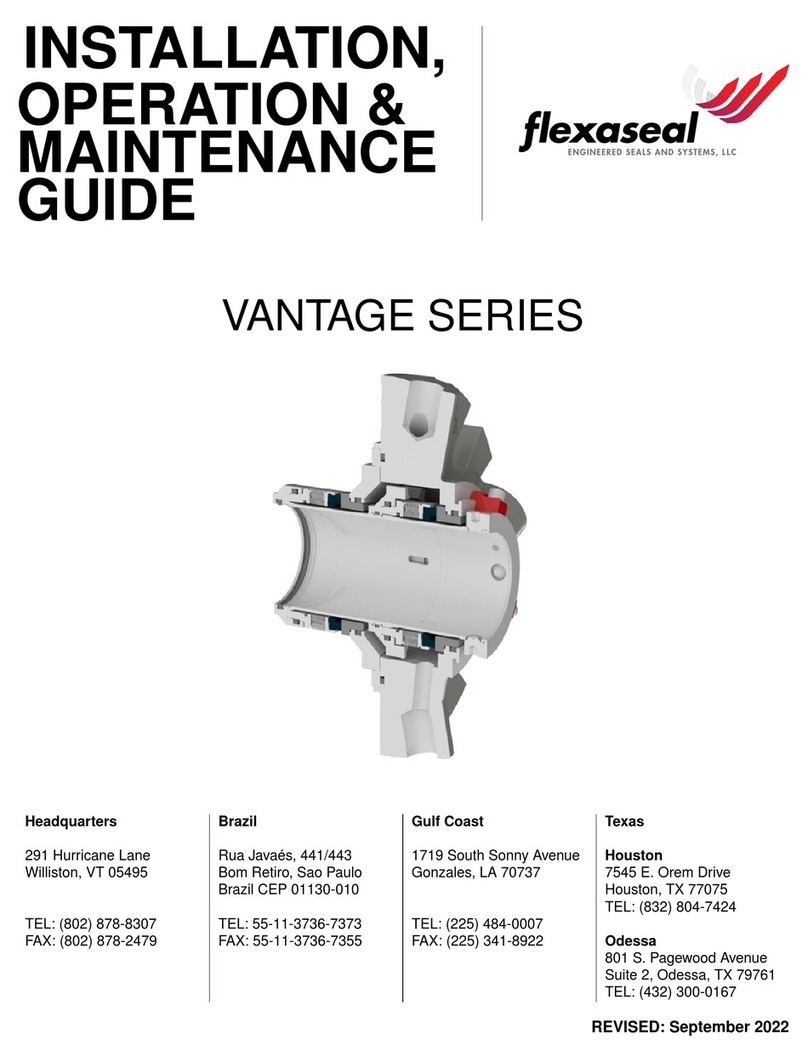
Flex-A-Seal
Flex-A-Seal VANTAGE Series Installation, operation, maintenance guide

Haufftechnik
Haufftechnik HRD SG b40 installation instructions
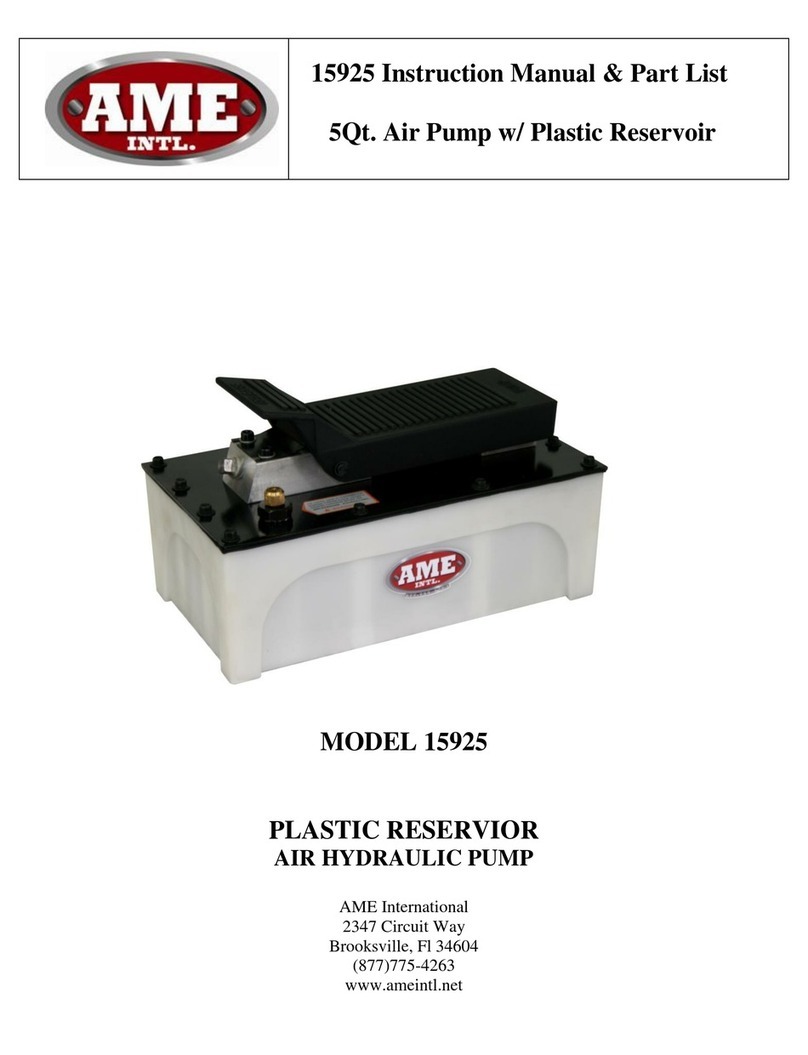
AME
AME 15925 instruction manual

Alfalaval
Alfalaval Toftejorg MultiJet 50 instruction manual
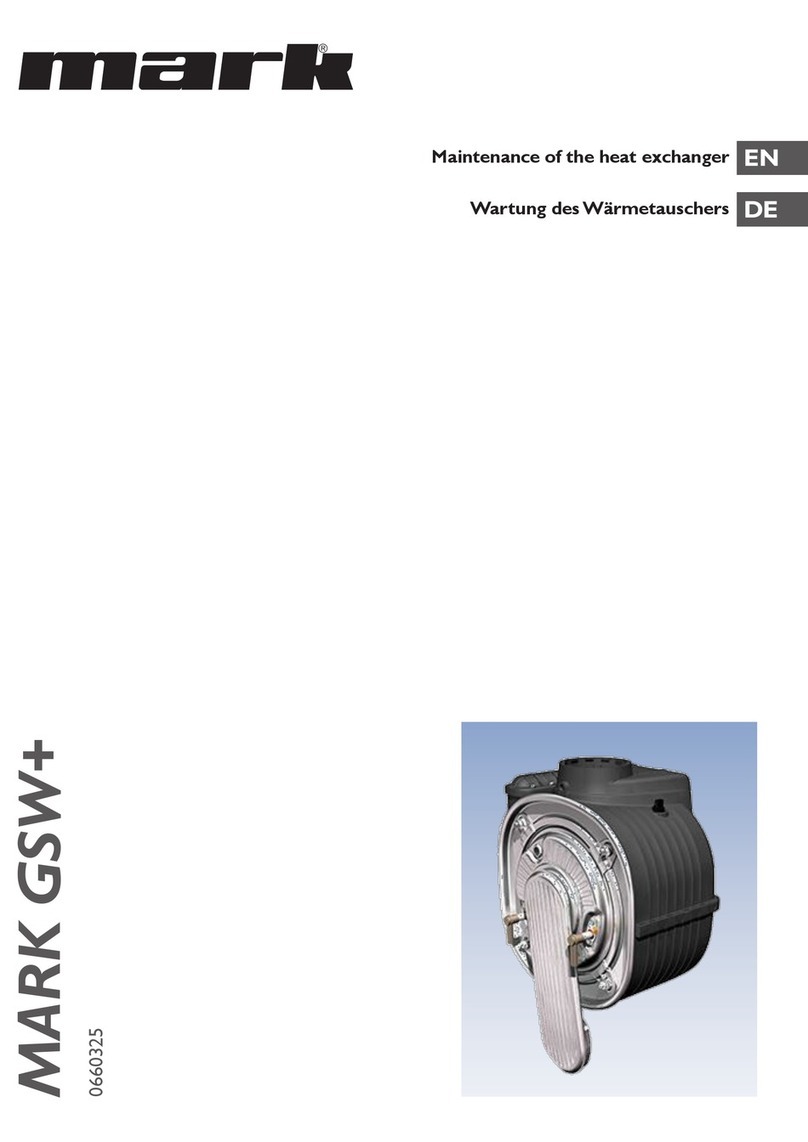
Mark
Mark GSW+ Maintenance instructions
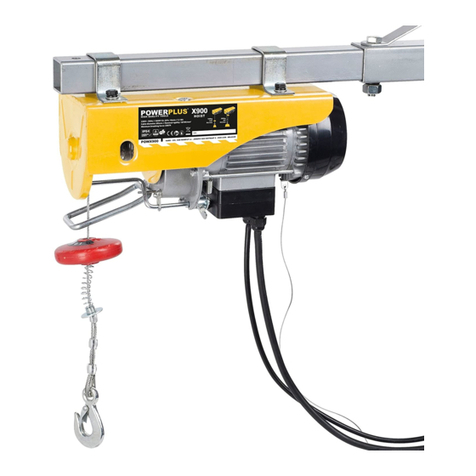
Powerplus
Powerplus POWX902 manual

Tolomatic
Tolomatic MXP32N Series Repair Parts Sheet
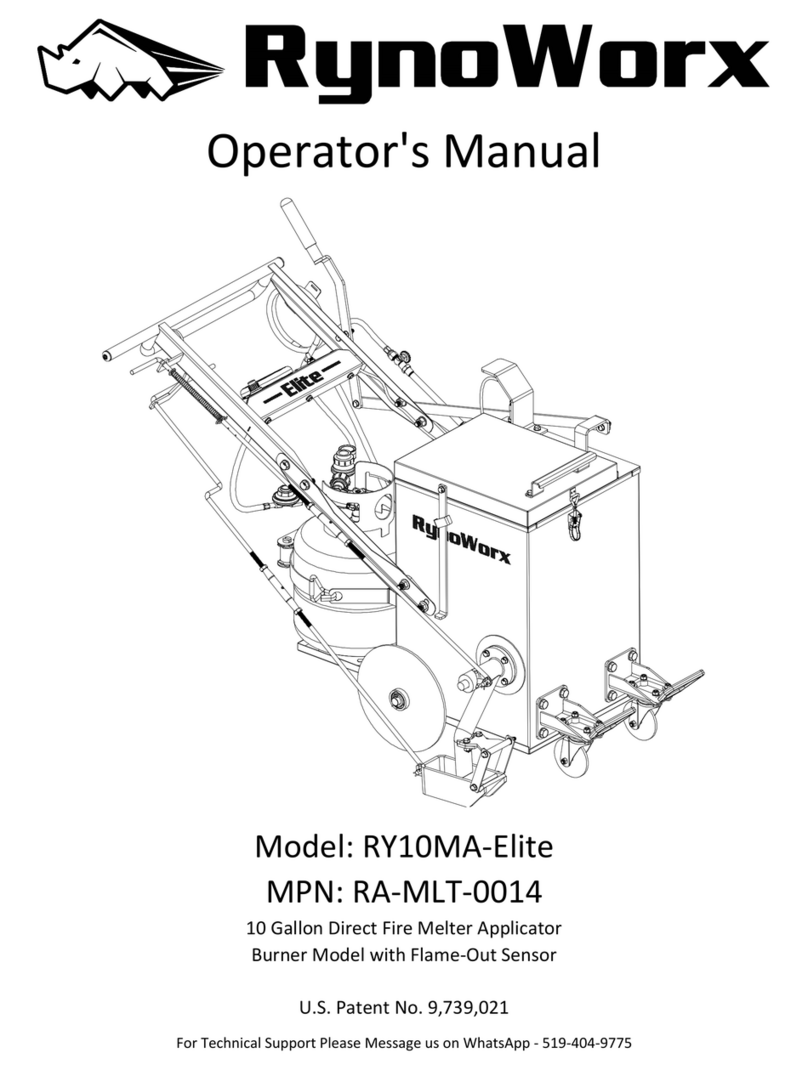
RYNO WORX
RYNO WORX RY10MA-Elite Operator's manual

Alfalaval
Alfalaval MBPX810H Installation and operating instructions
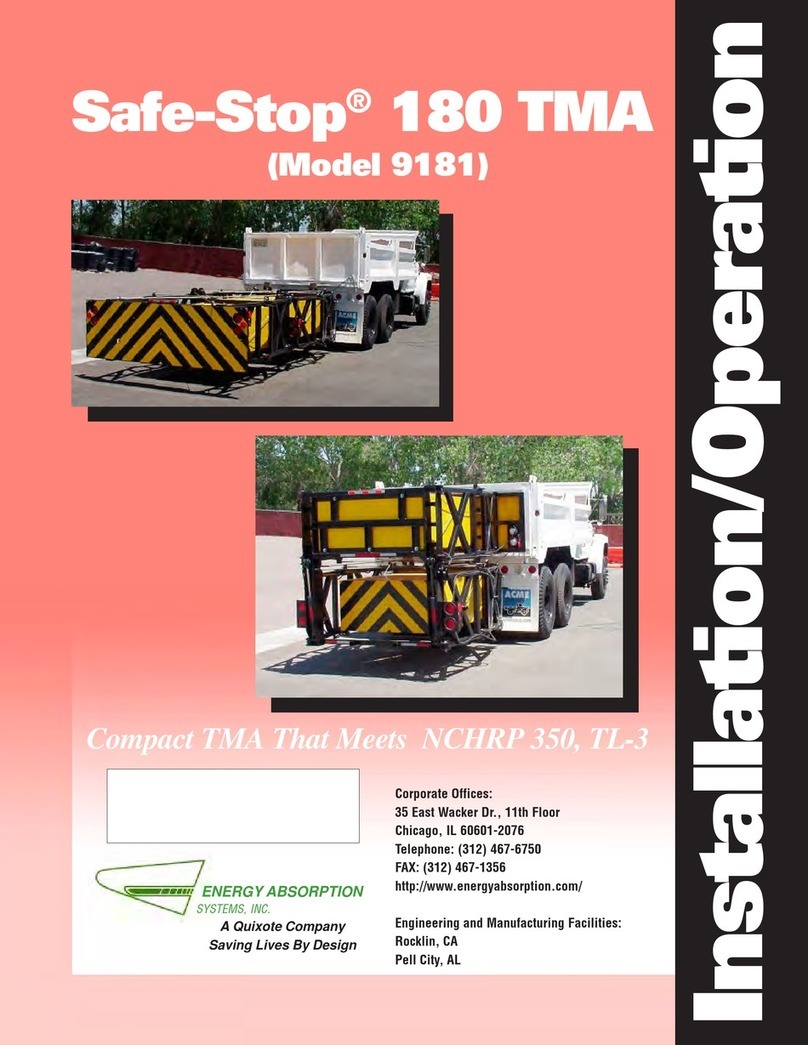
Energy Absorption
Energy Absorption Safe-Stop 180 TMA 9181 Installation and operation manual
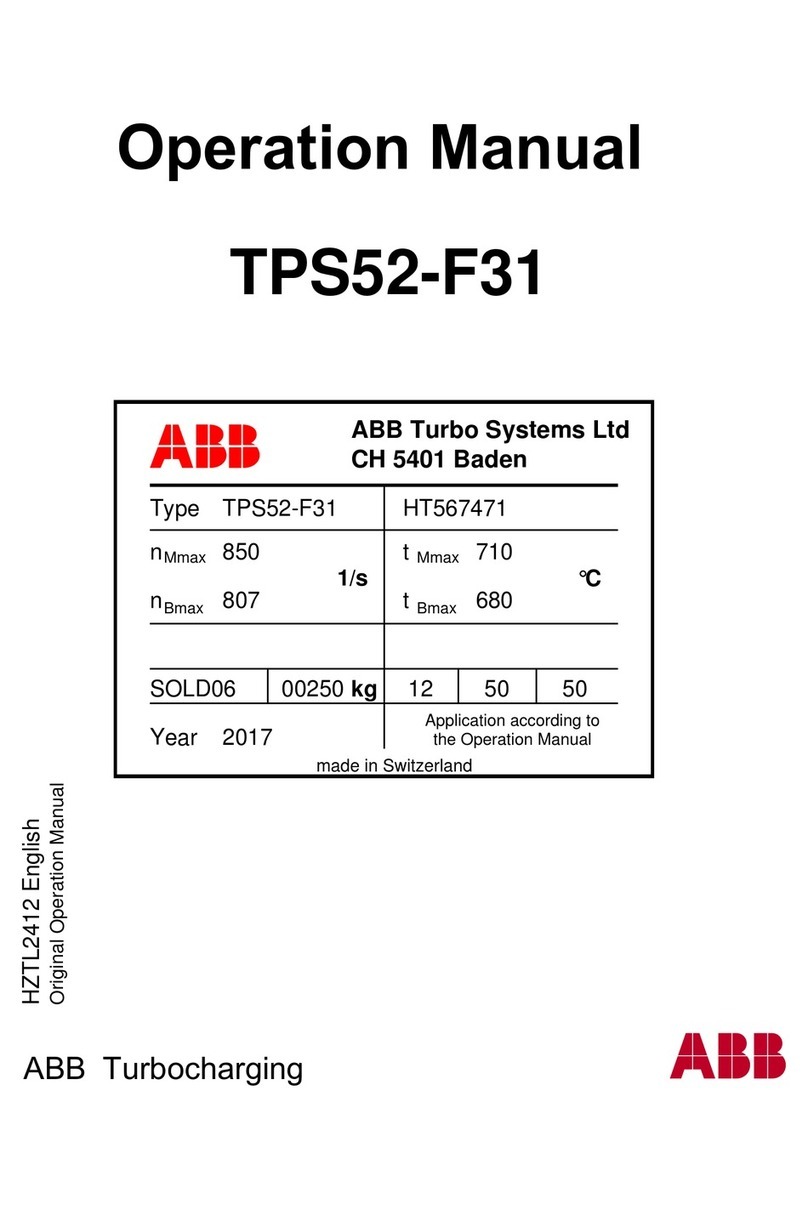
ABB
ABB HT567471 Operation manual
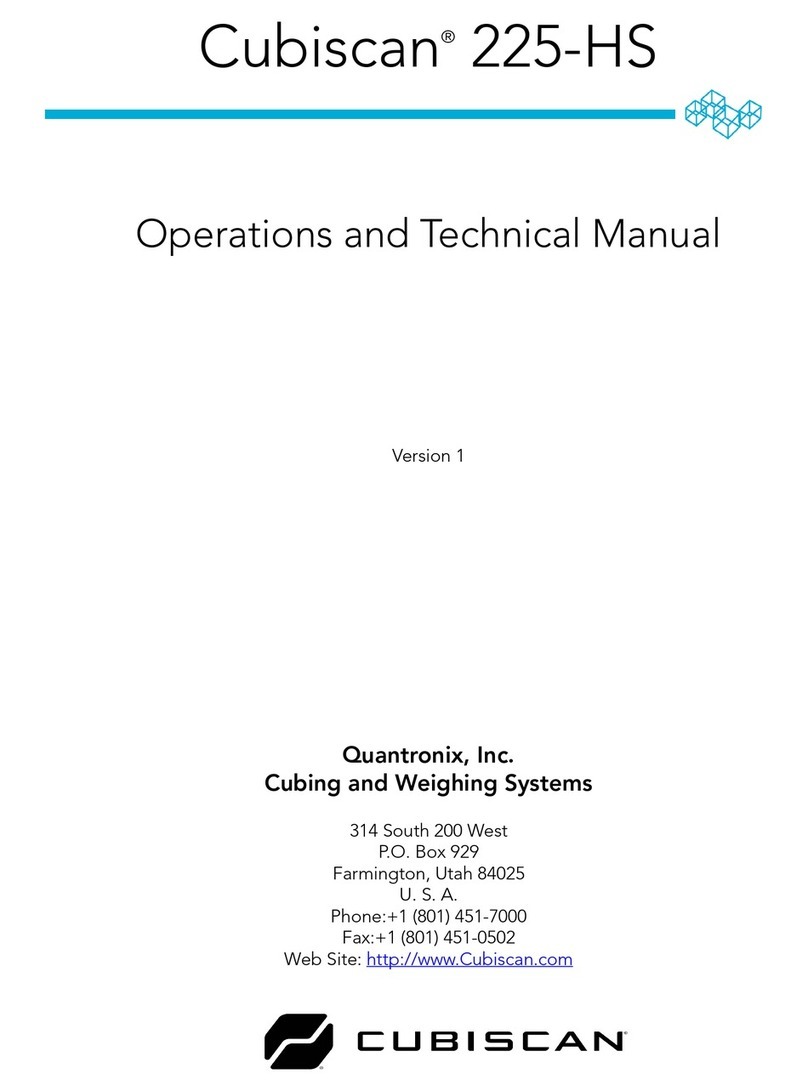
CubiScan
CubiScan 225-HS Operation and technical manual
